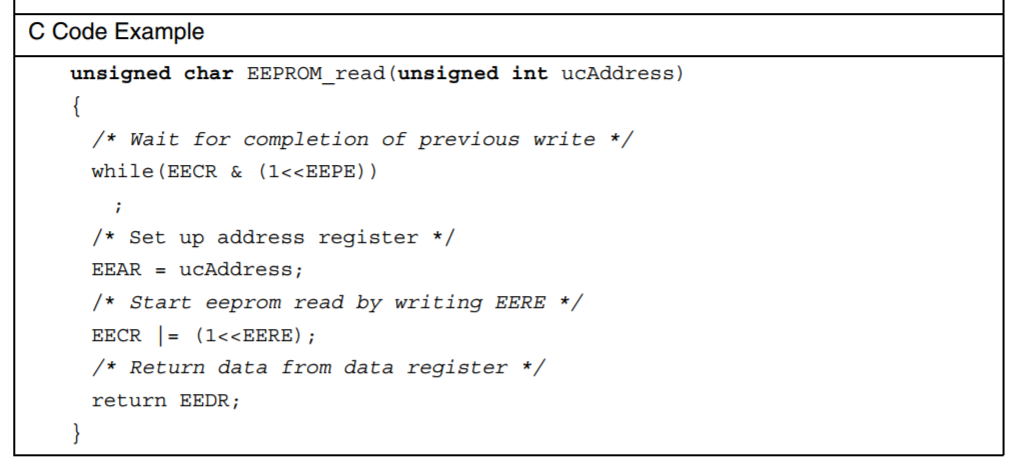Thought this was easy, but I can't find this information on how long / how many cycles a EEPROM read operation on an ATTINY84 takes.
Page 22 of the datasheet has a table with write and erase times:

Page 19 shows a code example where first the adress register EEAR is set, then the EERE bit is set and then the data is returned. 
Besides that I could not find any information on the operation speed.
- Am I correct in the assumption that the EEPROM read data are instantly available in the EEDR register after EERE bit is set?
- Does this mean that a EEPROM read is about same fast a storing the data in SRAM?
- How many cycles does a reap operation take?
